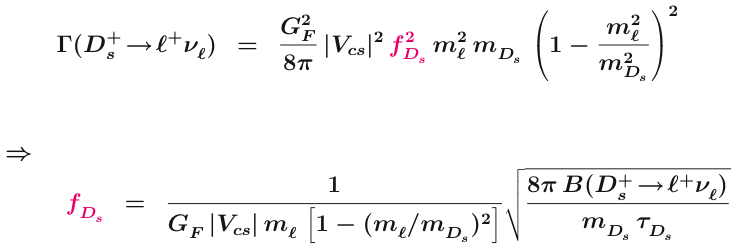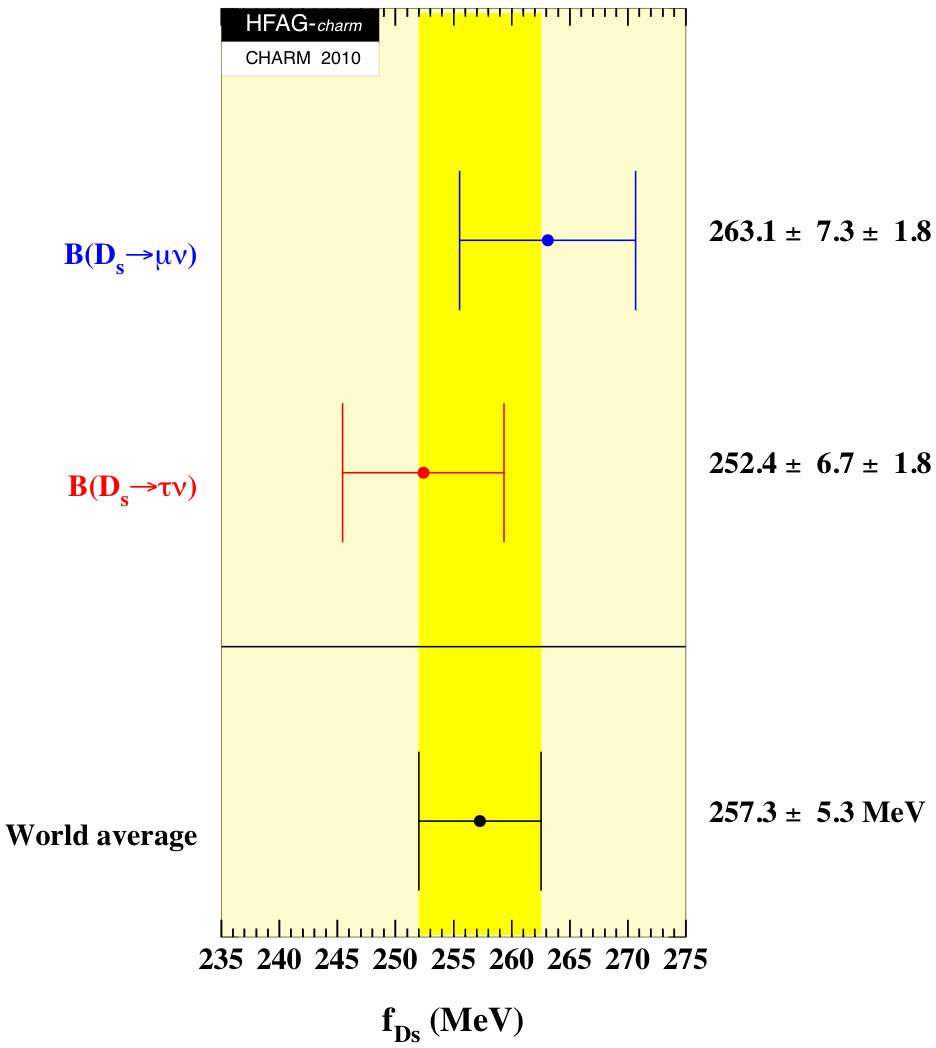
Input results for B(Ds+ → μ+ ν) and B(Ds+ → τ+ ν):
Procedure:
HFAG uses Belle, BaBar, and CLEO measurements of
B(Ds+ → μ+ ν) and
B(Ds+ → τ+ ν) to calculate
a world average (WA) value for fDs.
The B(Ds+ → μ+ ν)
results used are entries #1-3 in the table above;
the B(Ds+ → τ+ ν)
results used are entries #9-14. Other entries in the table are not
used due to either
(a) their being superseded;
(b) their having additional unpublished uncertainties; or
(c) their having limited precision.
Note that BaBar entry #1 (2010) supersedes BaBar entry #5 (2007).
BaBar entries #9 (2010) and #10 (2010) have a 40% statistical correlation.
These latter entries (#9, #10) and CLEO-c entry #13 (2009) have
an 0.28% systematic correlation due to the branching fraction
B(τ → e νe ντ )
= (17.85 ± 0.05)%.
As a first step we calculate WA values for B(Ds+ → μ+ ν) [plot A] and B(Ds+ → τ+ ν) [plot B] . We then use these WA values to find values for fDs via the equation below, where l = μ or τ. The resulting values fDs(μ) and fDs(τ) are subsequently combined by taking a weighted average, accounting for correlations due to MDs, τDs, and Vcs [plot C] . The errors on fDs(μ) and fDs(τ) are calculated as follows: values for parameters on the right-hand-side of the equation below are sampled from gaussian distributions having mean values equal to the central values and standard deviations equal to the respective errors. The resulting values of fDs are plotted [plots D, E] , and the r.m.s. of the distribution is taken as the ± 1σ error.

Results
[plot C] :
(click on figure for higher resolution)
Note that the first error listed is the total uncorrelated error (statistical plus systematic), and the second error listed is the correlated error (mainly from τDs). The COMBOS output is here .

Parameter values as taken from the 2010 Particle Data Book:
GF /(ℏc)3 =
(1.16637 ± 0.00001) × 10-5 GeV-2
Mμ = 0.105658367 GeV/c2
Mτ = (1.77682 ± 0.00016) GeV/c2
MDs = (1.96847 ± 0.00033) GeV/c2
Vcs = 0.97345 +0.00015-0.00016
τDs = (500 ± 7) × 10-15 s